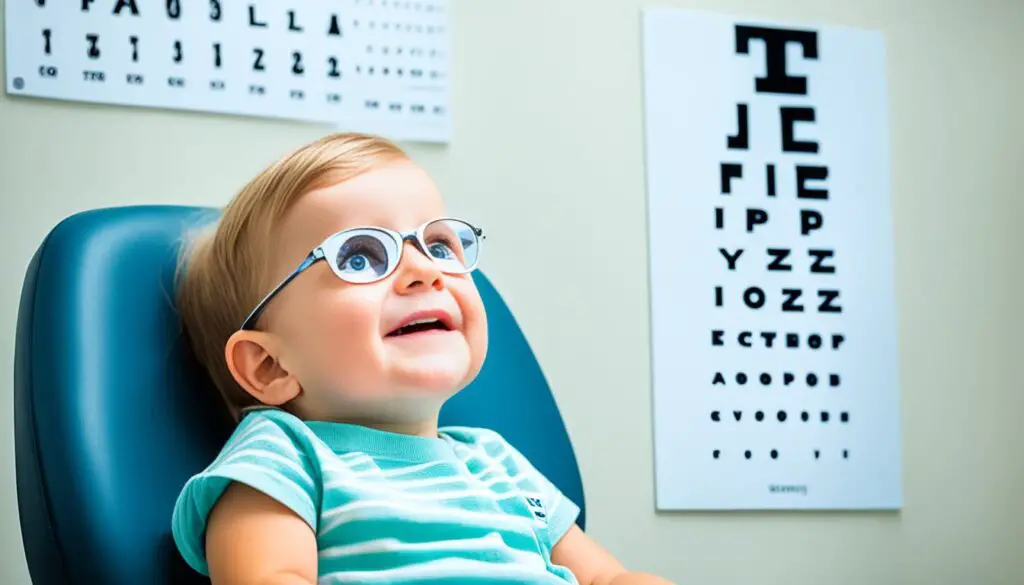Screen Time Solved: Effective Management Strategies for Families
As a parent, I understand the challenges of managing screen time in the digital age. With the increasing influence of technology in our lives, it’s crucial to find effective strategies that allow our families to strike a balance between our digital life and real-world interactions. By implementing these strategies, we can create a healthier lifestyle and promote positive relationships within our families.
Technology has revolutionized the way we live, work, and communicate. While it offers numerous benefits and opportunities, excessive screen time can impact our family dynamics and overall well-being. That’s why it’s essential to address this issue head-on and find practical solutions to manage screen time effectively.
In this article, I will discuss some proven strategies that can help you navigate the challenges of screen time management and create a harmonious environment for your family. From scheduling regular tech-free activities to promoting open communication, these strategies will empower you to foster a healthy relationship with technology while prioritizing real-world connections.
Key Takeaways:
- Find a balance between digital life and real-world interactions for a healthier lifestyle.
- Implement practical strategies to manage screen time effectively within your family.
- Promote open communication and set boundaries to create a harmonious environment.
- Regularly schedule tech-free activities to engage in real-world experiences.
- Create a supportive and understanding environment to address the challenges of technology.
The Importance of Regular Eye Exams for Children’s Vision Health
Regular eye exams are essential for children to detect and address vision issues at an early stage. While school screenings play a role in identifying potential problems, they may not be sufficient to catch all eye conditions. That is why scheduling comprehensive eye exams with a qualified optometrist is crucial.
During these exams, optometrists assess visual acuity and screen for common eye conditions such as astigmatism, nearsightedness, and farsightedness. By evaluating visual acuity, which measures the sharpness and clarity of vision, eye care professionals can determine the need for vision correction measures.
“Early detection and intervention are key when it comes to children’s vision health,” says Dr. Emily Thompson, a pediatric optometrist at VisionCare Clinic. “Regular eye exams should be part of every child’s healthcare routine to ensure optimal visual development and address any potential issues.”
Comprehensive eye exams provide a thorough evaluation that goes beyond the basic screening tests conducted in schools. They may include tests for eye muscle coordination, eye teaming, and depth perception, among others. These additional assessments help detect and address any potential vision problems that may affect a child’s learning, sports performance, and overall quality of life.
When it comes to the frequency of eye exams, the American Optometric Association recommends the following guidelines:
- Infants and toddlers: The first comprehensive eye exam should occur between 6 and 12 months of age.
- Preschool-age children: A second eye exam should take place between 3 and 5 years old.
- School-age children: After the initial exams, children should undergo comprehensive eye exams every 1 to 2 years, or as recommended by their optometrist.
By following these recommendations and scheduling regular eye exams, parents can ensure the early detection and management of any vision issues that may arise. Timely intervention can help improve children’s visual acuity, prevent further vision deterioration, and support their overall eye health and development.

| Vision Issue | Prevalence | Treatment Options |
|---|---|---|
| Nearsightedness (Myopia) | 25% of children aged 12-17 have myopia | – Prescription eyeglasses or contact lenses – Orthokeratology (corneal reshaping therapy) – Low-dose atropine eye drops |
| Strabismus (Crossed eyes) | Affects approximately 4% of children | – Patching one eye – Vision therapy – Eyeglasses or contact lenses |
| Astigmatism | Affects around 28% of children | – Prescription eyeglasses or contact lenses – Orthokeratology |
Remember, comprehensive eye exams are crucial for children’s vision health. Don’t wait for symptoms to appear—schedule regular exams and give your child the best chance at optimal visual development.
Encouraging Consistent Use of Vision Corrective Tools
When it comes to vision correction, ensuring that children wear their prescription eyewear consistently can be a challenge for parents. However, consistent use of glasses is essential in alleviating vision problems and preventing further strain on their eyes. To encourage children to embrace their glasses, there are several strategies parents can employ.
Involving Children in the Frame Selection Process
One effective approach is to involve children in the selection of their eyeglass frames. By giving them a sense of ownership and allowing them to choose a style that suits their taste, children are more likely to feel confident and comfortable wearing their glasses.
Introducing Glasses Gradually
Introducing glasses gradually can also help children adjust to their new vision correction tools. Parents can start by having their children wear their glasses for short periods each day and gradually increase the duration over time. This gradual introduction allows children to adapt to the feeling of wearing glasses without feeling overwhelmed.
Setting an Example with Sunglasses
Parents can further promote the consistent use of vision corrective tools by setting an example themselves. By wearing sunglasses with UV protection, parents demonstrate the importance of protecting their eyes and reinforce the idea that eyewear is a normal part of daily life.
“By involving children in the selection of their eyeglass frames and gradually introducing glasses, parents can encourage the consistent use of vision corrective tools.”
In addition to these strategies, it is important for parents to ensure that the prescription eyewear provides the necessary UV protection. UV rays can harm the eyes, and wearing sunglasses with UV protection can safeguard against these potential risks.
By normalizing the use of vision corrective tools and emphasizing their importance, parents can protect their children’s vision and promote acceptance of glasses as an integral part of their daily routine.
The Benefits of Consistent Vision Correction
Consistent use of vision corrective tools offers numerous benefits for children. By wearing their prescription eyewear as recommended, children can experience improved vision clarity, reduced eye strain, and enhanced overall visual comfort. Moreover, addressing vision issues early on can prevent further deterioration and promote healthy eye development.
Ensuring that children understand the importance of vision correction and feel comfortable wearing their glasses is key to maximizing the benefits of these essential tools.
Limiting Screen Time and Promoting Outdoor Activities
Excessive screen time can have detrimental effects on children’s vision and overall well-being. It can contribute to digital eye strain, myopia, and disrupted sleep patterns. As a parent, it is crucial to set boundaries with technology and limit the amount of time your children spend in front of screens.
To safeguard your children’s visual development, consider establishing a bedtime routine that doesn’t involve screens. Encourage activities such as reading a book, practicing mindfulness, or engaging in conversation before bedtime. By replacing screen time with these alternative activities, you promote healthy sleep patterns and reduce the risk of digital eye strain.
Additionally, prioritize outdoor activities to counterbalance the time spent indoors with screens. Spending time outside exposes children to natural light, which is beneficial for their eye development. It also provides an opportunity for them to engage in physical activities and strengthen their overall well-being.
Benefits of Outdoor Activities for Vision Health
Engaging in outdoor activities can help reduce the negative effects of prolonged screen time and promote healthier vision. Natural light exposure supports proper eye development, reduces eye strain caused by screens, and decreases the risk of myopia.
According to a study published in the Journal of Ophthalmology, increased time spent outdoors during childhood is associated with a lower prevalence of myopia. The study found that every additional hour spent outdoors per week resulted in a decrease in the risk of developing myopia by 2%.
Encourage your children to participate in outdoor activities such as playing sports, exploring nature, or going for walks. These activities not only support their visual health but also provide an opportunity for them to engage with the world around them and develop a well-rounded lifestyle.

| Screen Time Recommendations | Age Group | Daily Limit |
|---|---|---|
| Infants (0-18 months) | N/A | Avoid screen time, except for video chatting with family or friends |
| Toddlers (18-36 months) | 1-2 years | No more than 1 hour of high-quality programming |
| Preschoolers (3-5 years) | 3-5 years | No more than 1 hour of high-quality programming |
| Children (6 years and older) | 6 years and older | Consistent limits should be set, based on the child’s individual needs and lifestyle |
By setting clear screen time limits and encouraging outdoor activities, you are taking proactive steps to protect your children’s vision and promote their overall well-being. Implementing these strategies creates a healthy balance between modern technology and the benefits of outdoor exploration.
Supporting Healthy Vision through Nutrition
Proper nutrition plays a vital role in maintaining healthy eyes. By encouraging children to consume a variety of nutrient-rich foods, such as fruits, vegetables, whole grains, lean proteins, and healthy fats, we can support their optimal visual development.
Specific foods have been found to be particularly beneficial for eye health. Incorporating these into a child’s diet can provide essential vitamins and nutrients that promote healthy vision. Some key foods include:
- Carrots: Packed with beta-carotene, which is converted to vitamin A in the body, carrots help support overall eye health and night vision.
- Leafy greens: Spinach and kale are rich in lutein and zeaxanthin, antioxidants that can reduce the risk of chronic eye diseases.
- Citrus fruits: Oranges and grapefruits are excellent sources of vitamin C, which supports blood vessels in the eyes and reduces the risk of cataracts.
- Nuts: Almonds, walnuts, and other nuts contain vitamin E and omega-3 fatty acids, which can help protect against age-related macular degeneration.
- Fish: Fatty fish like salmon, tuna, and mackerel are high in omega-3 fatty acids, which are essential for optimal visual development and may reduce the risk of dry eyes and macular degeneration.
By incorporating these eye-healthy foods into a child’s diet, we can provide the necessary nutrients for their growing eyes and help safeguard their long-term eye health.
| Food | Nutrients | Benefits |
|---|---|---|
| Carrots | Beta-carotene, vitamin A | Support overall eye health and night vision |
| Leafy greens | Lutein, zeaxanthin | Reduce the risk of chronic eye diseases |
| Citrus fruits | Vitamin C | Support blood vessels in the eyes, reduce the risk of cataracts |
| Nuts | Vitamin E, omega-3 fatty acids | Protect against age-related macular degeneration |
| Fish | Omega-3 fatty acids | Essential for optimal visual development, reduce the risk of dry eyes and macular degeneration |
It’s important to note that while these foods support overall eye health, a balanced diet is key. Encouraging children to make healthy food choices and providing a variety of nutrient-rich options will not only benefit their vision but also contribute to their overall well-being.
Image alt tag: Eye Health and Nutrition
Conclusion
Effective screen time management is crucial for maintaining family well-being and promoting healthy vision. By prioritizing strategies such as scheduling regular eye exams, encouraging consistent use of vision corrective tools, limiting screen time, promoting outdoor activities, and providing healthy nutrition, families can support optimal vision health.
Regular eye exams play a vital role in detecting and addressing vision issues at an early stage, ensuring timely intervention and appropriate vision correction measures. By encouraging children to wear prescription eyewear consistently, parents can alleviate vision problems and protect their children’s eyesight.
Limiting screen time and promoting outdoor activities help prevent eye strain and promote healthy visual development. Establishing boundaries with technology and incorporating a bedtime routine that doesn’t involve screens can improve sleep patterns and reduce the risk of digital eye strain. Additionally, providing nutrient-rich foods that support eye health, such as fruits, vegetables, whole grains, and lean proteins, can contribute to maintaining healthy vision.
By embracing these strategies, families can create a balanced lifestyle that values digital interactions while nurturing real-world connections. Prioritizing screen time management and vision health not only benefits individual family members but also enhances overall family well-being.
FAQ
How can I effectively manage screen time for my family?
To effectively manage screen time, it is important to establish boundaries and set limits on the amount of time spent on digital devices. Creating a schedule that incorporates designated screen-free periods, such as meal times and bedtime, can help promote real-world interactions and a healthier lifestyle.
Why are regular eye exams important for children’s vision health?
Regular eye exams are crucial for detecting and addressing vision issues at an early stage. While school screenings are helpful, they may not identify all eye conditions. Scheduling comprehensive eye exams with a qualified optometrist allows for a thorough assessment of visual acuity and screening for common eye conditions, ensuring prompt intervention and appropriate vision correction measures.
How can I encourage my child to consistently wear prescription eyewear?
Getting children to wear glasses consistently can be a challenge for parents. However, consistent use of vision corrective tools is essential for alleviating vision problems and preventing further strain. Parents can involve their child in the frame selection process, introduce glasses gradually, and set an example by wearing sunglasses with UV protection. Normalizing the use of vision corrective tools can help protect their children’s vision and promote acceptance.
How can I limit screen time and promote outdoor activities for my child?
Setting boundaries with technology and limiting screen time are key strategies for safeguarding children’s visual development. Establishing a bedtime routine that doesn’t involve screens and encouraging outdoor activities can support healthy eye development and reduce eye strain caused by excessive screen use. Time spent outdoors exposes children to natural light, which is beneficial for their vision health.
How does nutrition impact vision health?
Proper nutrition plays a vital role in maintaining healthy eyes. Encouraging children to consume a variety of nutrient-rich foods, such as fruits, vegetables, whole grains, lean proteins, and healthy fats, supports optimal visual development. Specific foods like carrots, leafy greens, citrus fruits, nuts, and fish are particularly beneficial for eye health. By incorporating eye-healthy snacks into their child’s diet, parents can provide essential nutrients for their growing eyes.
What are the key strategies for managing screen time and promoting vision health?
By scheduling regular eye exams, encouraging consistent use of vision corrective tools, limiting screen time, promoting outdoor activities, and providing healthy nutrition, families can effectively manage screen time and support optimal vision health. Prioritizing these strategies helps create a balanced lifestyle that values digital interactions while nurturing real-world connections.






